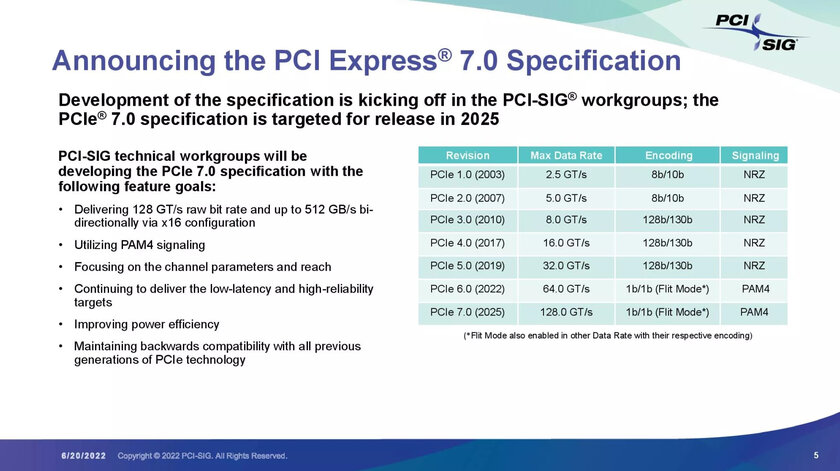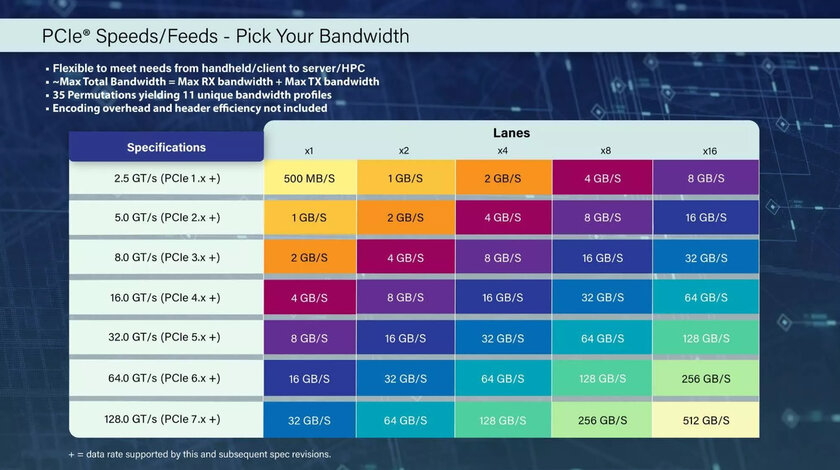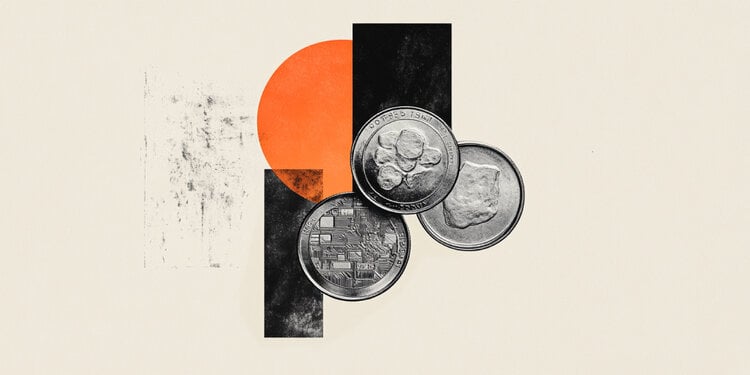Yesterday, June 21, at the Developers Conference 2022 event, representatives of the non-profit organization PCI SIG (PCI Special Interest Group) officially announced the latest PCIe 7.0 standard, which will replace existing data transfer interface standards for the foreseeable future. True, during the presentation, representatives of the organization said that it was not worth expecting an early release of the first products with a new interface standard – PCIe 7.0 was just announced, but development is still underway, and the final specifications of the standard will be adopted only in 2025. Accordingly, the first drives and motherboards with PCIe 7.0 should wait until the end of the decade at best.
For example, the PCIe 6.0 standard was announced in 2020, but its final specifications were adopted only in January 2022, but to this day, major manufacturers do not use the latest standard – there are only a few models on the market with controllers for PCIe 6.0. Moreover, the already existing PCIe 5.0 standard, which has been conditionally used by manufacturers for several years, also cannot boast of massive demand among manufacturers and potential buyers – according to market analysts, the fifth version of PCIe will gain popularity in a year or two. Based on this, we can assume that the PCIe 7.0 version announced yesterday will be integrated into desktop PCs in five to eight years.

However, the characteristics of the new standard are really impressive – one PCIe 7.0 lane is capable of providing data transfer at a speed of 32 GB / s. This means that 16 PCIe 7.0 lanes, when working in both directions (read and write), are capable of transferring data at speeds up to 512 GB / s – this is twice as much as is available for the modern PCIe 6.0 standard, the final specifications of which were adopted six months ago. What’s more, a PCIe 7.0 x4 SSD could theoretically provide the user with a read and write speed of 64 GB / s – this is four times faster than PCIe 5.0 x4 (15.7 GB / s).

On the other hand, to implement the PCIe 7.0 standard, manufacturers will have to use a more expensive bus and complex wiring on motherboards, so this is likely to lead to an increase in the final cost of products. But by the time the standard reaches the first consumers, the situation may change dramatically – in five years a more expensive tire may become the market standard.
Source: Trash Box
Donald-43Westbrook, a distinguished contributor at worldstockmarket, is celebrated for his exceptional prowess in article writing. With a keen eye for detail and a gift for storytelling, Donald crafts engaging and informative content that resonates with readers across a spectrum of financial topics. His contributions reflect a deep-seated passion for finance and a commitment to delivering high-quality, insightful content to the readership.







